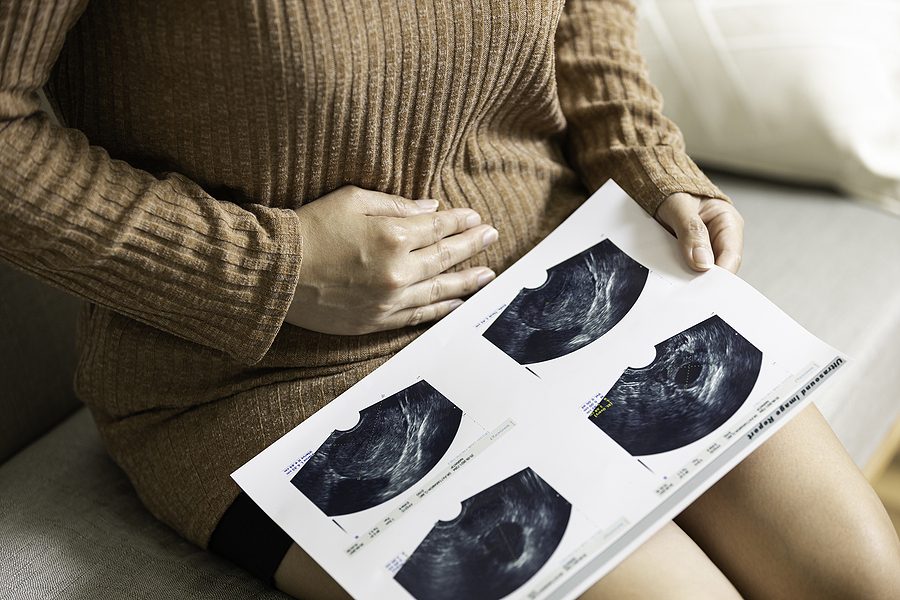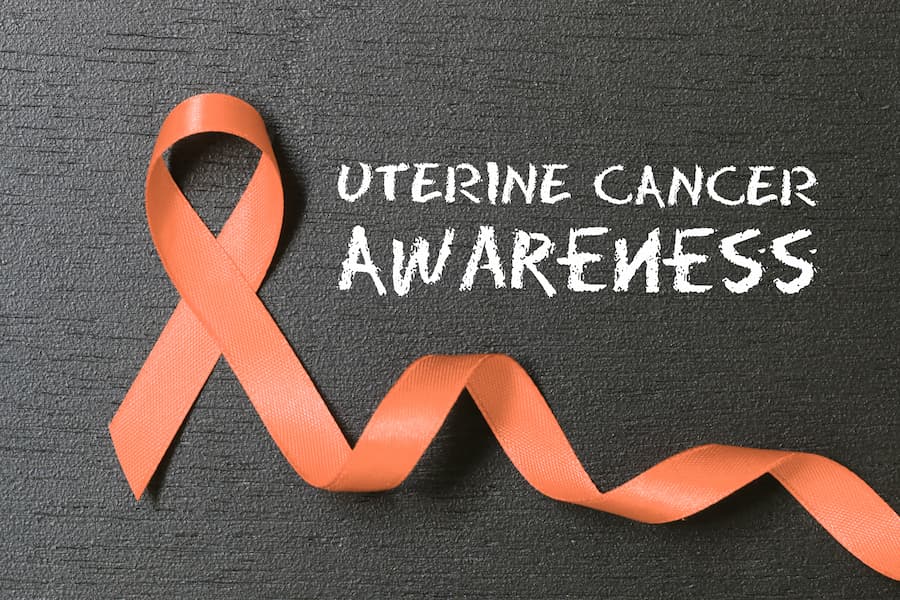The Cost of Adding Endometrial Cancer to WTCHP Covered

This year, doctors will diagnose nearly 67,000 new endometrial (uterine) cancer cases – the fourth most common cancer among women. However, it has been the only reproductive cancer not on theWorld Trade Center Health Program’s (WTCHP) list of covered 9/11-related conditions. A recent unanimous decision by the WTCHP’s Scientific Advisory Committee signaled that endometrial cancer would finally gain Program coverage for lifetime treatment and also 9/11 victim compensation.
About Endometrial (Uterine) Cancer
Cancer of the endometrium, or the lining of the uterus, is the most common type of reproductive cancer in females, with around 66,950 new cases diagnosed in the U.S. each year. According to the American Cancer Society, more than 12,000 women die each year of cancers affecting the uterus, with most of those cancers being endometrial.
Some women face a higher-than-average risk of developing endometrial cancer, including those who: are obese; take estrogen after menopause, or use products such as birth control pills or tamoxifen (a common medication used to treat breast cancer, which is a covered WTCHP condition); use an IUD; have a genetic history that includes family members with endometrial or colorectal cancer (colorectal cancer is also a covered condition), have Type 2 diabetes, and have had radiation to the pelvic area in the course of treating another type of cancer.
Like many types of cancer, endometrial cancer produces very few discernible signs and symptoms until it has reached a more advanced stage.
Some of the symptoms experienced by women with this type of cancer include:
- Unusual vaginal bleeding or discharge, which occurs in about 90 percent of all women diagnosed with the disease.
- Pelvic pain.
- A mass in the pelvic area.
- Unexplained weight loss.
Suppose you were exposed to toxins at or near Ground Zero (as a responder or if you worked, lived, or went to school south of Canal Street between 911 and May 30, 2002) or another 9/11 site and currently suffer from any of these conditions. In that case, the WTCHP may cover the costs of treating your condition plus you may have the right to payment from the September 11th Victim Compensation Fund (VCF).
How Is Endometrial Cancer Treated?
Surgery is the primary treatment for endometrial cancer. A hysterectomy generally involves removing the uterus and the cervix. Surgeons can perform hysterectomies either through small incisions in the abdomen or by removing the uterus through the vagina.
Doctors may recommend a vaginal hysterectomy if the patient is not healthy enough for other surgeries. They may perform a radical hysterectomy if cancer has spread outside of the uterus. This procedure involves removing the uterus, the tissues surrounding the uterus, and the upper part of the vagina close to the cervix.
In addition to surgery, other treatment options for endometrial cancer can include:
- Radiation therapy, which uses high-energy radiation, such as X-rays, to kill cancer cells. Radiation used to treat endometrial cancer can be delivered either by placing radioactive materials inside the body or by beaming high-energy rays at the tumor. In some cases, both types of radiation can be used.
- Chemotherapy, which uses intense drugs to kill cancer cells, either in pill form or through an IV. A combination of well-known chemotherapy drugs may treat endometrial cancer that has progressed to stage 3 or higher. This treatment is also often used in combination with radiation therapy and surgery. Unfortunately, chemotherapy produces heavy side effects, including nausea, vomiting, sores to the mouth or vagina, hair loss, an increased risk of infection, anemia or shortness of breath, and excess bleeding and bruising from minor injuries.
- Hormone therapy, which uses drugs that block the hormones that cause cancer. Doctors often combine it with chemotherapy.
- Targeted therapy, where chemotherapy drugs target certain changes in cancer cells. This treatment option for endometrial cancer is still fairly new, and not many drugs will provide targeted therapy treatment for it. Doctors may use targeted therapy for advanced cancers or to treat recurring cancer.
- Immunotherapy, which uses medication to help the body’s immune system fight cancer.
How Much Does It Cost to Treat Endometrial Cancer?
The costs of treating endometrial cancer can vary widely between women, with the costs increasing when the cancer is in an advanced stage, the number of therapies used to treat it, and the geographic region where the treatment takes place. With the WTCHP’s addition of endometrial cancer to its list of covered conditions, the Program will bear 100% of these costs.
Surgical Costs
Most endometrial cancer treatment begins with surgery, followed up by one or more of the drug therapies listed above. According to HealthGrades.com, a vaginal hysterectomy costs around $4,270, while a laparoscopic hysterectomy costs about $8,400. Using high-tech robotics to perform the procedure typically results in higher costs.
These costs are for the surgery only and do not include payment for the surgeon performing the procedure, treatment of any resulting complications, or follow-up care.
According to a study of more than 1,500 patients with endometrial cancer published in the journal Value in Health, the average time of drug therapy treatment was three months, and the mean total cost of treatment was $17,000 a month during this time.
Post-Treatment Monitoring and Recurrence Costs
Endometrial cancer is likely to recur after successful treatment within the first few years. Because of this, doctors must monitor the patient’s condition closely. Experts recommend having follow-up visits with the doctor every three to six months for the first two or three years and every six to 12 months after that. Women who have more-advanced stage cancers may need CT scans of the abdomen, chest, and pelvis every three to six months for the first three years and every six to 12 months for the next two years.
CT scans cost anywhere from $270 to $5,000, depending on the facility.
The doctor will perform a pelvic exam and check for enlarged lymph nodes in the groin during each follow-up visit. Doctors may order additional tests, including more scans, blood work, and biopsies if they identify issues of concern.
Women with endometrial cancer are at a higher risk of not only a recurrence of cancer but of:
- Breast cancer
- Colon cancer
- Rectal cancer
- Lung cancer
- Lymphoma or leukemia(blood cancers)
- Bladder cancer
- Kidney cancer
- Vaginal cancers
- Soft tissue cancers
These cancers were linked to exposure to the toxic 9/11 dust in Lower Manhattan for months following the terror attacks. Breast cancer occurring in females is the third most commonly suffered cancer by responders and survivors participating in the WTCHP.
Only 30 percent of the participants in the Program only have one certified cancer or non-cancer condition, while 22 percent have two certified conditions, and another 17 percent have three. Nearly 700 WTCHP participants have ten or more 9/11-related medical conditions that are certified and being treated or monitored through the Program.
Additional Costs of Adding Endometrial Cancer to the List of Covered Conditions
Adding endometrial cancer to the covered conditions has budgetary impacts beyond the WTCHP. It also adds to the long-term costs borne by the VCF because it makes a new group of 9/11 survivors and first responders potentially eligible for VCF financial benefits that include up to $250,000 for pain and suffering caused by the disease. This pain and suffering award is in addition to any economic losses such as lost wages and past out-of-pocket medical expenses, among other costs.
Certification of a WTCHP-covered health condition satisfies the part of the health-related eligibility requirement for claimants seeking compensation from the VCF. Additionally, family members are permitted to file a “deceased” claim with the VCF to obtain compensation for the expenses and impacts of a loved one’s death from a covered 9/11-related cancer.
Was Cost a Factor in the Delay in Adding the Condition to the List?
As reported by the Centers for Disease Control and Prevention (CDC), uterine cancer was the only cancer that was not yet added to the WTCHP list of covered conditions, even though individuals who were diagnosed with uterine cancer after taking tamoxifen to treat other 9/11 related cancers are on the list and covered.
For years, the WTCHP left uterine cancer off the list of covered conditions due to a lack of scientific evidence suggesting a causal link between 9/11 toxic dust exposure and the development of uterine cancer.
The CDC explained that part of the problem was not enough studies performed on women in the 9/11 community showed the link. The advisory committee reviewed nine relevant studies. However, it excluded three other studies—two because they only studied men, and another because it failed to provide a comparison population or background rates.
It has been difficult to develop a large enough population of women because the largest group of the 9/11 community participating in studies is the responder community, of which only 14 percent are female. Among FDNY members of WTCHP, less than 1 percent are female. Females do, however, make up about half of the survivor community (those who lived, worked, or attended school or daycare in Lower Manhattan on 9/11 or in the months that followed). Females only account for about 32.5 percent of the overall pool of WTCHP participants.
Link Finally Established
In September 2020, the scientists at Rutgers Environmental and Occupational Health Sciences Institute—one of the WTCHP’s Clinical Centers of Excellence—again petitioned the Program to request the addition of uterine cancer to the list of covered conditions, citing recent studies that showed endocrine-disrupting chemicals (EDCs) potentially contributed to uterine cancer.
The dust plume that enveloped Lower Manhattan after the 9/11 terror attacks contained numerous EDCs, including polychlorinated dibenzoparadoxins and polychlorinated dibenzofurans. A bipartisan group in Congress urged the WTCHP’s committee to make a speedy decision on the matter for the sake of the women whose exposure to toxic 9/11 dust profoundly altered their lives.
In November 2021, shortly after receiving the letter from Congress, the WTCHP voted unanimously to add endometrial cancer to its list of covered conditions.
“The risks of developing breast and endometrial cancer are related to reproductive factors and hormonal therapies,” it acknowledged, “and risks may vary by the age and stage of development at which the exposure occurred. Because endometrial cancers are clearly related to hormonal factors, the presence of multiple EDCs at the WTC sites and other exposed areas is of special significance in evaluating risks associated with WTC exposures.”
What About the WTCHP Funding Shortfall?
The WTCHP currently faces a potential funding shortfall. Calculations show the Program could run out of money by FY 2025 due to higher-than-expected numbers of responders and survivors who have newly enrolled in the Program.
The Program has around 110,000 participants, and at least 24,000 of those members have at least one certified 9/11-related cancer. The CDC has warned that “the complexity of treating cancer, especially with other comorbidities, and an aging membership in general, has increased the Program’s health care costs beyond what was previously estimated.”
Congress has put forward a bipartisan bill to increase Program funding. While those efforts have yet to bear fruit, experience suggests that responders and survivors can feel relatively confident that the funds will pay for their care when they need them.
Would you like more information about applying for the WTCHP treatment for covered endometrial cancer or seeking compensation through the VCF?
Contact a 9/11 benefits lawyer for your free case evaluation.



